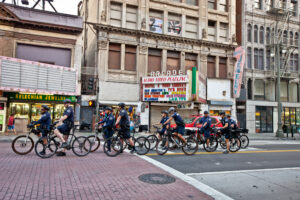
311 Service Requests
Learn More Metadata Download the Dataset View on Map Variable Definitions:Total 311 Call Rate: The number of 311 service requests made by community residents per
Variable Definitions:
Part I Property Crimes: The number of Part I property crimes reported per 10,000 people; including burglary, larceny theft, motor vehicle theft, and arson
Part I Violent Crimes: The number of Part I violent crimes reported per 10,000 people; including murder and non-negligent manslaughter, forcible rape, aggravated assault, and robbery
Part II Crimes: The number of Part II crimes reported per 10,000 people; including 21 categories of offenses ranging from simple assault to forgery and fraud to drug possession
Source:
Source: Los Angeles Police Department (LAPD), Los Angeles County Sheriff Department (LASD); American Community Survey, 5-year estimates
Years Available:
2011, 2012, 2013, 2014, 2015, 2016, 2017, 2018, 2019, 2020, 2021, 2022
The Uniform Crime Reporting (UCR) Program of the FBI divides criminal offenses into two groups: Part I and Part II Crimes. Part I Crimes are serious crimes that occur with regularity in all areas of the country and are likely to be reported to the police. The UCR collects information on the age, sex, and race of people arrested for Part I Crimes. Part I Property Crimes include burglary, larceny theft, motor vehicle theft, and arson. The presence of property crime in a neighborhood can cause mental distress in residents and may impact property values in an area. Part I Violent Crimes include murder and non-negligent manslaughter, forcible rape, aggravated assault, and robbery. Exposure to violent crime can significantly hinder psychological, social and academic development in children and leaves them at a higher risk of committing violence in the future. Individuals living in high-crime areas may be less likely to spend time outdoors and foster social connectedness with neighbors. Rates of violent crime significantly vary across neighborhoods and are often related to poverty rates, job access, segregation, and residential stability among many other factors. Neighborhoods segregated along race and economic lines tend to have higher reported rates of violent crime, which often hinder economic and institutional investment in an area.
Written by Debarun Sarbabidya
Citation:
Maximino, Martin. “The impact of crime on property values: Research roundup.” Journalist’s Resource, 12 March 2014. Link
“Neighborhoods and Violent Crime.” Evidence Matters: Transforming Knowledge Into Housing and Community Development Policy. U.S. Department of Housing and Urban Development: Office of Policy Development and Research, Summer 2016. Link
“UCR Offense Definitions.” Uniform Crime Reporting Statistics. Los Angeles City Planning. Link.
“Offense Definitions.” Crime in the United States 2011. United States Department of Justice: Federal Bureau of Investigation, 2011. Link

Learn More Metadata Download the Dataset View on Map Variable Definitions:Total 311 Call Rate: The number of 311 service requests made by community residents per

There are disparities present in how the justice system treats communities of color, including the Latino population. These disparities are greatest for Black populations, which

This story was created as a part of the NDSC Criminal Justice Data Initiative. In the spring of 2019, the USC Price Center partnered with
